-
 Bitcoin
Bitcoin $118,841.1054
1.02% -
 Ethereum
Ethereum $3,364.2689
7.44% -
 XRP
XRP $3.0337
3.93% -
 Tether USDt
Tether USDt $1.0004
0.04% -
 BNB
BNB $708.2059
2.49% -
 Solana
Solana $173.2385
5.74% -
 USDC
USDC $0.9999
-0.01% -
 Dogecoin
Dogecoin $0.2121
6.85% -
 TRON
TRON $0.3090
2.81% -
 Cardano
Cardano $0.7628
2.25% -
 Hyperliquid
Hyperliquid $46.8391
-2.08% -
 Stellar
Stellar $0.4537
0.15% -
 Sui
Sui $3.9529
-2.88% -
 Chainlink
Chainlink $16.6414
3.72% -
 Hedera
Hedera $0.2354
1.52% -
 Bitcoin Cash
Bitcoin Cash $499.1285
0.43% -
 Avalanche
Avalanche $22.6400
0.57% -
 Shiba Inu
Shiba Inu $0.0...01438
4.88% -
 UNUS SED LEO
UNUS SED LEO $8.8507
-0.64% -
 Toncoin
Toncoin $3.1498
2.35% -
 Litecoin
Litecoin $97.4954
1.21% -
 Polkadot
Polkadot $4.1541
1.50% -
 Monero
Monero $331.4406
-1.03% -
 Pepe
Pepe $0.0...01350
5.24% -
 Uniswap
Uniswap $8.9103
-5.01% -
 Bitget Token
Bitget Token $4.7540
4.51% -
 Dai
Dai $0.9999
-0.02% -
 Ethena USDe
Ethena USDe $1.0008
0.00% -
 Aave
Aave $322.3328
-1.63% -
 Bittensor
Bittensor $431.8026
-0.50%
Can an NFT be changed after minting?
NFTs are generally immutable once minted, but off-chain metadata or smart contract features may allow limited post-minting changes if designed to do so.
Jul 09, 2025 at 02:42 pm
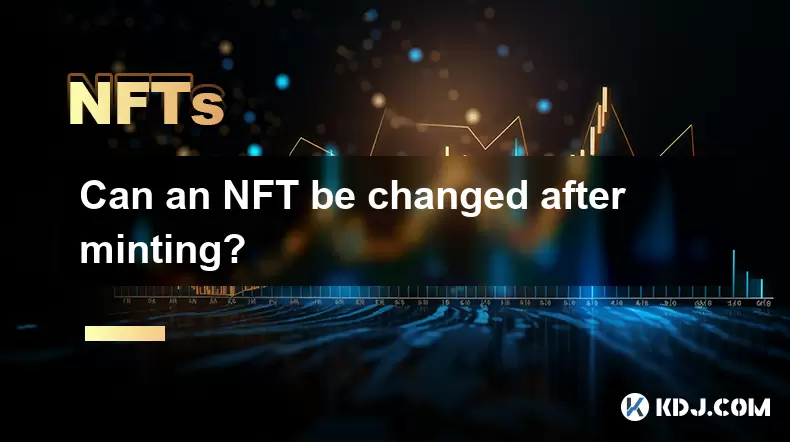
Understanding the Immutability of NFTs
Once an NFT (Non-Fungible Token) is minted, it becomes a permanent entry on the blockchain. The data associated with the token—such as ownership, metadata, and smart contract details—is stored in a way that cannot be altered without consensus from the network. This immutability ensures transparency and trust within decentralized systems. However, this also raises a common question: can an NFT be changed after minting?
The short answer is no, traditional NFTs cannot be modified once they are minted and recorded on the blockchain. Any changes to the underlying data would require altering the blockchain itself, which is practically impossible due to the cryptographic security and decentralization mechanisms.
The Role of Metadata in NFTs
Many people confuse the NFT itself with the metadata associated with it. The NFT typically contains a pointer or link to external data, such as an image, video, or description file. This metadata is often hosted off-chain using services like IPFS (InterPlanetary File System) or centralized servers.
If the metadata is stored off-chain, there may be possibilities for updating it depending on how the NFT was originally configured. For example:
- If the creator retains control over the metadata storage location
- If the smart contract allows for updates through specific functions
In such cases, while the NFT's core blockchain record remains unchanged, the associated content can be updated externally. This distinction is crucial when discussing whether an NFT can be "changed" post-minting.
Smart Contract Capabilities and Update Mechanisms
Some NFT projects build flexibility into their smart contracts by including functions that allow certain types of modifications. These include:
- A function to update the base URI of metadata
- An admin-controlled mechanism to alter descriptions or attributes
Such features must be explicitly coded before minting begins. Once the NFT is deployed, any update functionality depends entirely on what was included in the original smart contract.
Developers who wish to retain control over NFT metadata often use a proxy contract system. This involves separating the logic of the NFT contract from its storage, allowing upgrades to the contract code without changing the NFT's existence on the blockchain.
However, these updates do not change the NFT's fundamental identity or ownership—they only affect secondary data or functionalities defined in the contract.
Immutable NFTs vs. Upgradable NFTs
There are two main categories of NFTs based on their upgradability:
- Immutable NFTs: These are NFTs where no changes can be made after deployment. The metadata and smart contract are fixed, ensuring maximum transparency and trust.
- Upgradable NFTs: These NFTs are designed with modifiable components, usually via proxy contracts or metadata links. While more flexible, they introduce risks related to centralization and potential misuse.
Users should always verify whether an NFT project allows for changes post-minting and understand the implications. For instance, if the metadata URL is mutable, the actual digital asset linked to the NFT could be swapped out without the owner's consent.
Practical Examples of Post-Minting Modifications
Certain NFT platforms and marketplaces have experimented with dynamic NFTs that can change under specific conditions. For example:
- Axie Infinity allows for breeding and evolving NFT creatures, effectively modifying their traits
- Async Art enables layers of artwork that owners can unlock or change over time
- Some NFTs respond to real-world events or user inputs by altering visual or functional properties
These are special cases where the NFT's design anticipates future changes. In such scenarios, the NFT’s smart contract includes built-in logic for evolution or transformation.
It is important to note that even in these examples, the blockchain record of the NFT remains unaltered. What changes is either the referenced metadata or the state within the contract, not the token’s history or ownership.
Frequently Asked Questions
1. Can I edit the image of my NFT after minting?
Only if the image is stored off-chain and the metadata URL is editable. You cannot modify the image directly on the blockchain.
2. Is it possible to transfer editing rights of an NFT to someone else?
No, you cannot transfer editing rights unless the smart contract explicitly supports delegated management of metadata or contract settings.
3. Do all NFTs have updatable metadata?
No, many NFTs are designed with immutable metadata to ensure authenticity and prevent unauthorized changes.
4. How can I check if an NFT allows post-minting changes?
You can review the NFT’s smart contract code or consult the project documentation to determine whether update functions are available.
Disclaimer:info@kdj.com
The information provided is not trading advice. kdj.com does not assume any responsibility for any investments made based on the information provided in this article. Cryptocurrencies are highly volatile and it is highly recommended that you invest with caution after thorough research!
If you believe that the content used on this website infringes your copyright, please contact us immediately (info@kdj.com) and we will delete it promptly.
- California Dreamin' Web3: Coinbase, Ripple, and the Golden State's Crypto Embrace
- 2025-07-17 10:30:12
- Navigating the Base Ecosystem: Investment Targets and Strategic Restructuring
- 2025-07-17 10:50:12
- Whale Trading, Market Impact, and Cryptocurrency: Navigating the Waters
- 2025-07-17 10:50:12
- Trump, World Liberty Financial, and the WLFI Token: From Locked to Listed?
- 2025-07-17 10:55:12
- Meme Coins in 2025: Investing in the Hype or the Future of Crypto?
- 2025-07-17 11:10:12
- Talos Acquires Coin Metrics: A Major Move in Crypto Consolidation
- 2025-07-17 11:00:12
Related knowledge
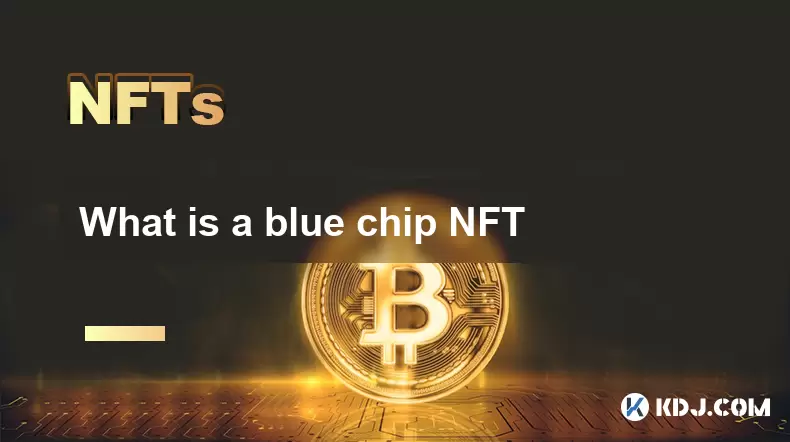
What is a blue chip NFT
Jul 17,2025 at 07:07am
Understanding the Concept of a Blue Chip NFTIn the world of non-fungible tokens (NFTs), certain digital assets stand out due to their consistent value...
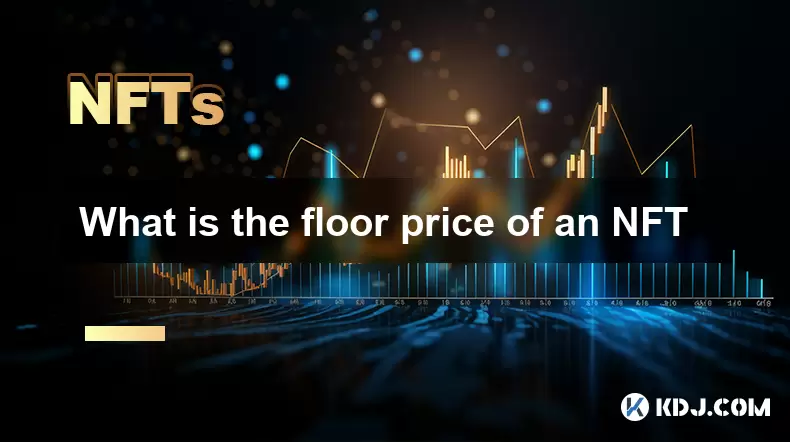
What is the floor price of an NFT
Jul 11,2025 at 07:56am
Understanding the Concept of Floor Price in NFTsIn the world of non-fungible tokens (NFTs), the floor price refers to the lowest price at which a part...
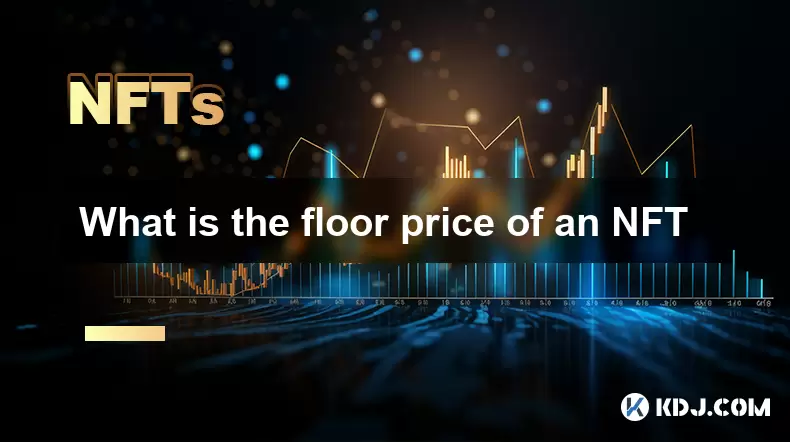
What is the floor price of an NFT
Jul 13,2025 at 06:21am
Understanding the Concept of Floor Price in NFTsThe floor price of an NFT (Non-Fungible Token) refers to the lowest listed price for a particular NFT ...
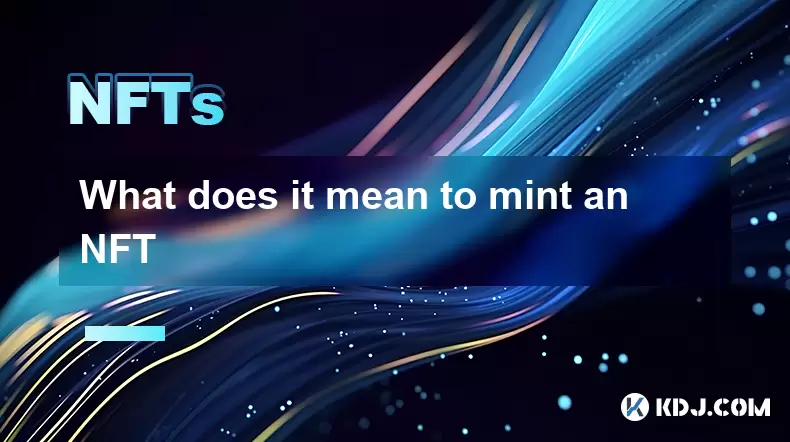
What does it mean to mint an NFT
Jul 11,2025 at 11:56pm
Understanding the Concept of Minting an NFTTo mint an NFT means to create a unique digital asset on a blockchain. This process involves converting a d...
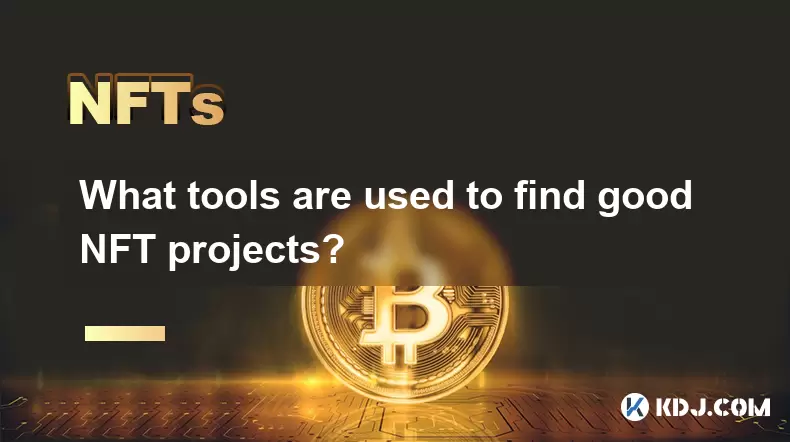
What tools are used to find good NFT projects?
Jul 10,2025 at 12:42pm
Understanding the Importance of NFT DiscoveryIdentifying promising NFT projects is a critical skill for collectors, investors, and creators within the...

What is the difference between owning the NFT and the IP?
Jul 15,2025 at 07:28pm
Understanding the Concept of NFT OwnershipWhen someone purchases an NFT (Non-Fungible Token), they are acquiring a unique digital certificate that pro...

What is a blue chip NFT
Jul 17,2025 at 07:07am
Understanding the Concept of a Blue Chip NFTIn the world of non-fungible tokens (NFTs), certain digital assets stand out due to their consistent value...

What is the floor price of an NFT
Jul 11,2025 at 07:56am
Understanding the Concept of Floor Price in NFTsIn the world of non-fungible tokens (NFTs), the floor price refers to the lowest price at which a part...

What is the floor price of an NFT
Jul 13,2025 at 06:21am
Understanding the Concept of Floor Price in NFTsThe floor price of an NFT (Non-Fungible Token) refers to the lowest listed price for a particular NFT ...

What does it mean to mint an NFT
Jul 11,2025 at 11:56pm
Understanding the Concept of Minting an NFTTo mint an NFT means to create a unique digital asset on a blockchain. This process involves converting a d...

What tools are used to find good NFT projects?
Jul 10,2025 at 12:42pm
Understanding the Importance of NFT DiscoveryIdentifying promising NFT projects is a critical skill for collectors, investors, and creators within the...

What is the difference between owning the NFT and the IP?
Jul 15,2025 at 07:28pm
Understanding the Concept of NFT OwnershipWhen someone purchases an NFT (Non-Fungible Token), they are acquiring a unique digital certificate that pro...
See all articles

























































































